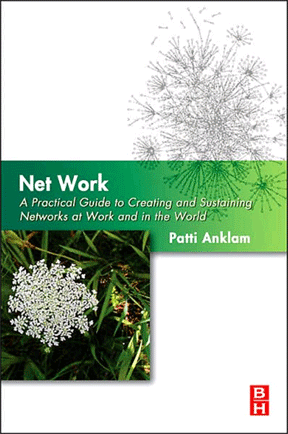Iâve been pondering a recent McAfee post, “Explaining my Fondness for Explicit Content” and have blogged on this in TheAppGap, but I was so tickled by his references to definitions by Kim Rachmeler on the topic of “collective intelligence:
- The network knows what the nodes do not
- The nodes know nothing. The nodes know all. Both are true.
These resonated with me partly because my view of the three eras of knowledge management (I will not use the vogue-ish 1.0, 2.0 terminology), I say that:
- in the first era, knowledge was considered to be in documents (artifacts)
- in the second era, it was acknowledged that knowledge is in people
- in this third era, knowledge is in the network
Kimâ statements above are a much more elegant and thought-provoking way of stating the third.
Meanwhile, Nancy White has posted on Haiku as Conference Capture one of the Haikus blogged by praxis101 at the recent SXSW:
Your social footprint.
Or your ghost on the network.
You have to choose one
If you go and read the McAfee article referenced above, youâll see that he makes the distinction between the explicit content (what we know weâve written, tagged or linked) and the implicit content on the web, which he describes as “fingerprints.” There must be a haiku there somewhere.



> in this third era, knowledge is in the network
Hi Patti - Spot on !
Time to get out a few choice McLuhan quotes!
your social network /
meets my spreadsheet formula /
how to add it up?
Iâm pretty sure that the first era knew knowledge was in people. KM has been going on far longer than computers have been around. Weâve been doing it as long as weâve been. In the first era, the shamans, chiefs, and elders were the knowledge holders, and knowledge was passed down in stories and lore.
Maybe Iâm thinking of the “zeroeth” era. B^)
Pingback: Random Sunday Thoughts: Identity/Ghosts | Full Circle Associates